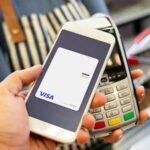
Today, dexterous fraudsters have been financially persistent and other earthlings without a source of income have been forced to believe fraudulent acts can be a wise career choice. Ever since the real-time socio-economic industry transition towards embracing the digital world, several financial service providers and users have encountered disturbing fraudulent cases via zero-day electronic banking solutions.
Among other socio-economic sectors, the financial sector evolved completely with technology innovation. This makes it more complicated, especially when sophisticated technology is manipulated by fraudsters to access finance databases to defraud their targets. Fraudsters have reportedly swindled people of their earnings via spamming, phishing, and card swapping to defraud their targets without traces.
It is a no-brainer fraudulent actors are smart and more dexterous than a legitimate career professional — they have evolved overtime to gain many tactical skills to defraud their targets and Card Swapping happens to trend exceedingly above other fraudulent vices.
Card Swapping is vulnerable to victims who disregard being cautious around unnoticed fraudsters. Perpetrators can easily swindle a victim off their card simply putting up an act to shift their attention and grab their target’s card. Sometimes fraudsters are known pretenders showing concerns to assist victims at the PoS terminal or ATM stands experienced with operational difficulties.
Techbooky.africa’s draft outlines security tips to make readers more cautious and guided about using debit cards in public ATM stands and PoS terminals. Here are tips to prevent and put them out of victimizing people.
• Before inserting the debit card into the machine, make sure of a preserved metered space for personal privacy. See to it that there isn’t a stranger lurking at the activity you have going on at the ATM stand or PoS terminal, because fraudsters have no job to be done at such a spot rather than stalk around for their next prey.
• Once it becomes disturbing to retrieve your debit card at the ATM, it is ideal to seek the consent of the security agent next to the ATM stands rather than calling the attention of a fraudster posing as a mere stranger.
Being unable to retrieve your debit card happens when the ATM detects suspicious actions that require the card owner to contact the services provider customer care for instant response. The customer care service will offer an optional solution in line with the ATM card seizure. The card owner might be required to visit the service provider’s real-time branch for card retrieval or might be advised to take a bow and block the card.
• As a card user, always remember to retrieve your card and the transaction receipts if you requested them before you exit the ATM or PoS terminal. If you notice your privacy is being threatened while you operated the ATM, abort the transaction and exit the ATM stand accordingly.
• If you misplace your mobile phone or you noticed it has been stolen, contact your bank service provider to block your USSD profile tied with your bank account. You can also use another mobile phone at your disposal to deactivate your USSD profile if your bank service provider isn’t responding instantly.
The same technique applies to a misplaced debit card or a stolen debit card.
If only the debit card is missing, you can either deactivate it from the bank app or deactivate the card via the USSD gateway.
Nonetheless, the banking security system disapproves of sharing users’ account credentials such as debit card passcode, BVN, the debit card sixteen digits number or the CCV at the back of the card, one-time passcode (OTP), and any other sensitive information that could leak the card owner finances to fraudsters.
The banking system also happens to be keen on developing an anti-fraud system to counter and secure users from experiencing leaked finances. The banking system also has dedicated channels for instant communication with customers such as verified social media handles, sending direct emails to the bank’s verified email address, contacting the bank’s customer service number, and reaching out to the bank directly.
It is ideal for e-bank users to have communication channels with their service providers saved up for impromptu security check purposes, Techbooky.africa writes.
Discover more from TechBooky
Subscribe to get the latest posts sent to your email.






